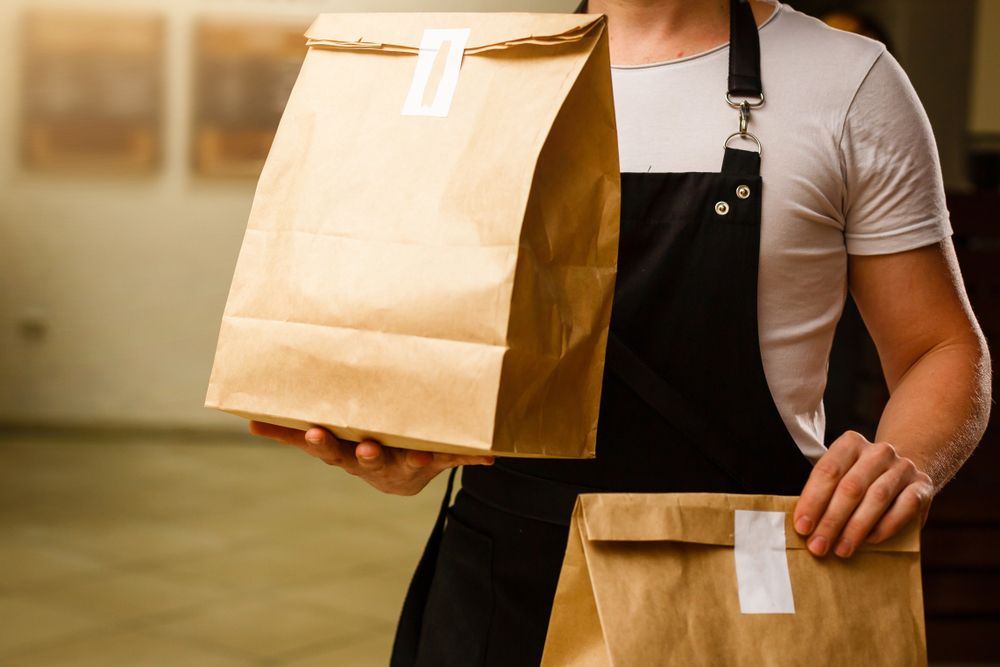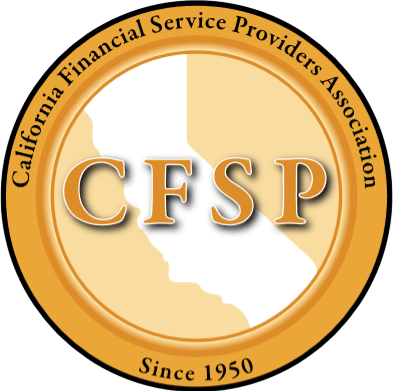10 Ways to Start Saving Money
By Marcela De Vivo • November 14, 2023
Inflation is boosting the costs of everyday goods and possibly creating havoc for monthly budgets. The price of food and other items has increased across the country, and as costs rise, income might be stretched to the limit. The impact of inflation can make everyday life much more expensive, and households might find it difficult to subsist on their income.
Saving money might seem like a luxury now. However, cutting costs and building up a savings reserve isn’t impossible even during inflationary times. Here are 10 ways to start saving money and create a ‘saving’ habit to build a reserve that can help in times of emergency:
- Pay with cash and keep the coins
- Allocate a small amount from every pay period
- Cancel unnecessary expenses
- Make a list at the grocery store
- Embrace energy-efficient habits
- Aim to pay on time
- Don’t opt for delivery
- Cook at home
- Audit spending habits
- Clip coupons and consider choosing private-label brands

Coins Add Up
According to Fundera, the majority of people use a method other than cash to pay for items; in fact, only one out of 10 consumers use cash. While swiping a debit or credit card could be more convenient, it also could lead to buying more.
Paying with cash limits purchasing power; consumers can only buy what they can afford to purchase with the money they have on hand. When using a debit card, it can be easy to grab a few extra items or even justify another item because swiping that card for a $2 purchase feels silly.
Using a credit card as a form of payment comes with other issues. If the card’s balance isn’t paid in full every month, that balance accrues interest which bumps up the price of those items.
Paying with cash might be a hard habit to embrace when an individual is used to swiping a card, but cash can lead to savings beyond the buying restraint that it places on the consumer. Paying with cash can mean receiving change back from the purchase. While a few quarters or dimes don’t seem like much money, the coins add up over time. Stash the change in a jar or a piggy bank and start saving.
Paying with cash is a simple way to help rein in spending habits and slowly start saving money, too.
Save a Small Amount from Every Paycheck
Consumers might feel that they cannot save. The reason they might feel that there is a financial barrier to saving money is that they view the concept of saving money incorrectly. Sometimes people assume that they need to allocate hundreds of dollars each month to accrue an emergency fund. While, yes, saving hundreds each month is a great option to build up savings, this savings plan isn’t feasible for everyone.
Creating lofty savings goals can cause frustration. If someone can’t afford to save $100 each month, they should consider allocating an amount that they can save. Even saving $5 each month is a start. Save what is feasible and build from there.

Cancel Unnecessary Expenses
Consumers who want to build a savings fund or who need to cut costs to save money might need to make some difficult or uncomfortable choices. When money is tight and consumers need to free up cash in their budget, it might be time to cancel unnecessary expenses.
Luxury expenses are things we want, not the things we need. Food, housing, and perhaps a car are all necessary. Streaming services, manicures, and lattes are all luxury ‘wants.’ Review the budget and see what ‘wants’ are draining the budget. These are the items that are up for cancellation.
Make a List at the Grocery Store
Using a debit or credit card can cause consumers to possibly spend more than they intend to spend, but there is another bad habit that also could be harming the budget and crimping cash flow. Shopping without a list makes consumers vulnerable to impulse buying, and shopping hungry could be problematic, too.
Shopping without a list could lead to impulse buying or simply buying items that are unnecessary—like purchasing more butter if it’s already stocked in the fridge. Without a list, consumers also could forget important items they need and may have to run up to the store again; this extra trip could lead to buying more items than intended.
Before visiting the grocery store, audit the fridge, pantry, and cupboards to understand the items that are needed for the week. Plan a menu to further guide food purchases. Aim to only purchase what is on the grocery list.

Embrace Energy-Efficient Habits
In some areas, the cost of electricity could be higher. Utility bills are a necessary expense for the home, but there are ways to save on these expenses. Bad habits can cause consumers to waste electricity and pay more utility costs. In addition, heating and cooling the home is the dominant energy drain in the home; for this reason, consumers need to be mindful of how they use their HVAC system.
During the winter (in areas that are cooler), open the blinds for natural light to enter the home (and maybe add some warmth). Look at the thermostat and check the temperature; consider nudging the temperature down a few degrees to help save money.
Consumers who have a programmable or smart thermostat also can choose more energy-efficient settings while they are at work. The thermostat also could be programmed at a warmer temperature during the evening when individuals are at home.
Aim to Pay on Time
When consumers pay their bills late, they are typically assessed an additional fee. These fees zap more money from the budget and make it harder to save money. In addition, payments that are far overdue also could cause credit scores to nudge lower.
Aim to pay bills on time to ensure that those bills aren’t even more expensive from accrued late fees. Set reminders on a phone or other device so the bills don’t go beyond the due date.
Ditch Delivery
Delivery services are convenient, but they also add to the cost of food and other goods. While having a delivery person drop off food at the door saves time, the service simply bumps the price of the meal. Money and time are both valuable; however, consumers who need to save money might need to sacrifice their time in order to save money and pay less for food and groceries.
Cook at Home
Fast food was once considered a cheap option for those on a budget. Drive-thru meals have become more expensive, and even a value meal at a fast food chain can cost $10. Cooking at home is healthier and cheaper. Instead of pulling through the drive-thru, make a list for the grocery store and start a cooking habit.
How cheap is cooking? A pound of ground beef is around $5 and makes four hamburger patties. Buns might be $10 (for eight), and a five-pound bag of French fries is around $6. Considering this meal would feed four, it amounts to about $5 per person. One meal for four costs only $3 more than that value meal that feeds one person.
Audit Spending Habits
Consumers might have different spending vices. Some treat themselves to an espresso at a favorite coffee shop each morning. Others love to buy new clothes. Some people go to the bar or out to eat often.
Where is the money going each month? How is income spent? Audit spending habits and find out what to cut in order to save money.
Clip Coupons and Choose Private Label Brands
Saving might mean making sacrifices. While a name-brand cereal might be the preference, private-label cereal could be cheaper and taste the same. In fact, some private label brands are really name brands in disguise. For those who love a particular item or brand, though, coupons can help reduce the cost. Clip coupons to save money on purchases and opt for private-label brands when possible.
Other Ways to Save to Build a Reserve
There are many other ways consumers can save money each month and have a little extra to set aside to create a reserve fund. Cutting unnecessary expenses, shopping smart, using cash, and even saving a set amount out of each paycheck can all be small steps to bigger savings goals.
In addition, creating a budget also can help consumers better manage their finances and help save money. In order to create a budget, consumers need to know their monthly expenses and their monthly income. A budget can be created via a piece of paper or using a computer program like Excel. Create line items for every expense, both fixed and variable. The price of variable expenses changes each month.
When budgeting variable expenses, aim for a higher amount to ensure that the budget isn’t impacted if costs are under budget. Variable expenses might include fuel (for cars), food, and entertainment. Utility costs also might be a monthly variable expense. Mortgage, rent, car insurance, car payments, and other loans are typically fixed expenses.
Once consumers create their budget, they can understand their financial big picture. They might decide that they need to cut some unnecessary spending habits in order to save money. Creating a budget can be the first step to taking control of an individual’s financial future.

Ditch Delivery
Delivery services are convenient, but they also add to the cost of food and other goods. While having a delivery person drop off food at the door saves time, the service simply bumps the price of the meal. Money and time are both valuable; however, consumers who need to save money might need to sacrifice their time in order to save money and pay less for food and groceries.
Cook at Home
Fast food was once considered a cheap option for those on a budget. Drive-thru meals have become more expensive, and even a value meal at a fast food chain can cost $10. Cooking at home is healthier and cheaper. Instead of pulling through the drive-thru, make a list for the grocery store and start a cooking habit.
How cheap is cooking? A pound of ground beef is around $5 and makes four hamburger patties. Buns might be $10 (for eight), and a five-pound bag of French fries is around $6. Considering this meal would feed four, it amounts to about $5 per person. One meal for four costs only $3 more than that value meal that feeds one person.

Audit Spending Habits
Consumers might have different spending vices. Some treat themselves to an espresso at a favorite coffee shop each morning. Others love to buy new clothes. Some people go to the bar or out to eat often.
Where is the money going each month? How is income spent? Audit spending habits and find out what to cut in order to save money.
Clip Coupons and Choose Private Label Brands
Saving might mean making sacrifices. While a name-brand cereal might be the preference, private-label cereal could be cheaper and taste the same. In fact, some private label brands are really name brands in disguise. For those who love a particular item or brand, though, coupons can help reduce the cost. Clip coupons to save money on purchases and opt for private-label brands when possible.
Other Ways to Save to Build a Reserve
There are many other ways consumers can save money each month and have a little extra to set aside to create a reserve fund. Cutting unnecessary expenses, shopping smart, using cash, and even saving a set amount out of each paycheck can all be small steps to bigger savings goals.
In addition, creating a budget also can help consumers better manage their finances and help save money. In order to create a budget, consumers need to know their monthly expenses and their monthly income. A budget can be created via a piece of paper or using a computer program like Excel. Create line items for every expense, both fixed and variable. The price of variable expenses changes each month.
When budgeting variable expenses, aim for a higher amount to ensure that the budget isn’t impacted if costs are under budget. Variable expenses might include fuel (for cars), food, and entertainment. Utility costs also might be a monthly variable expense. Mortgage, rent, car insurance, car payments, and other loans are typically fixed expenses.
Once consumers create their budget, they can understand their financial big picture. They might decide that they need to cut some unnecessary spending habits in order to save money. Creating a budget can be the first step to taking control of an individual’s financial future.
HOW MUCH IS MY CAR WORTH?













